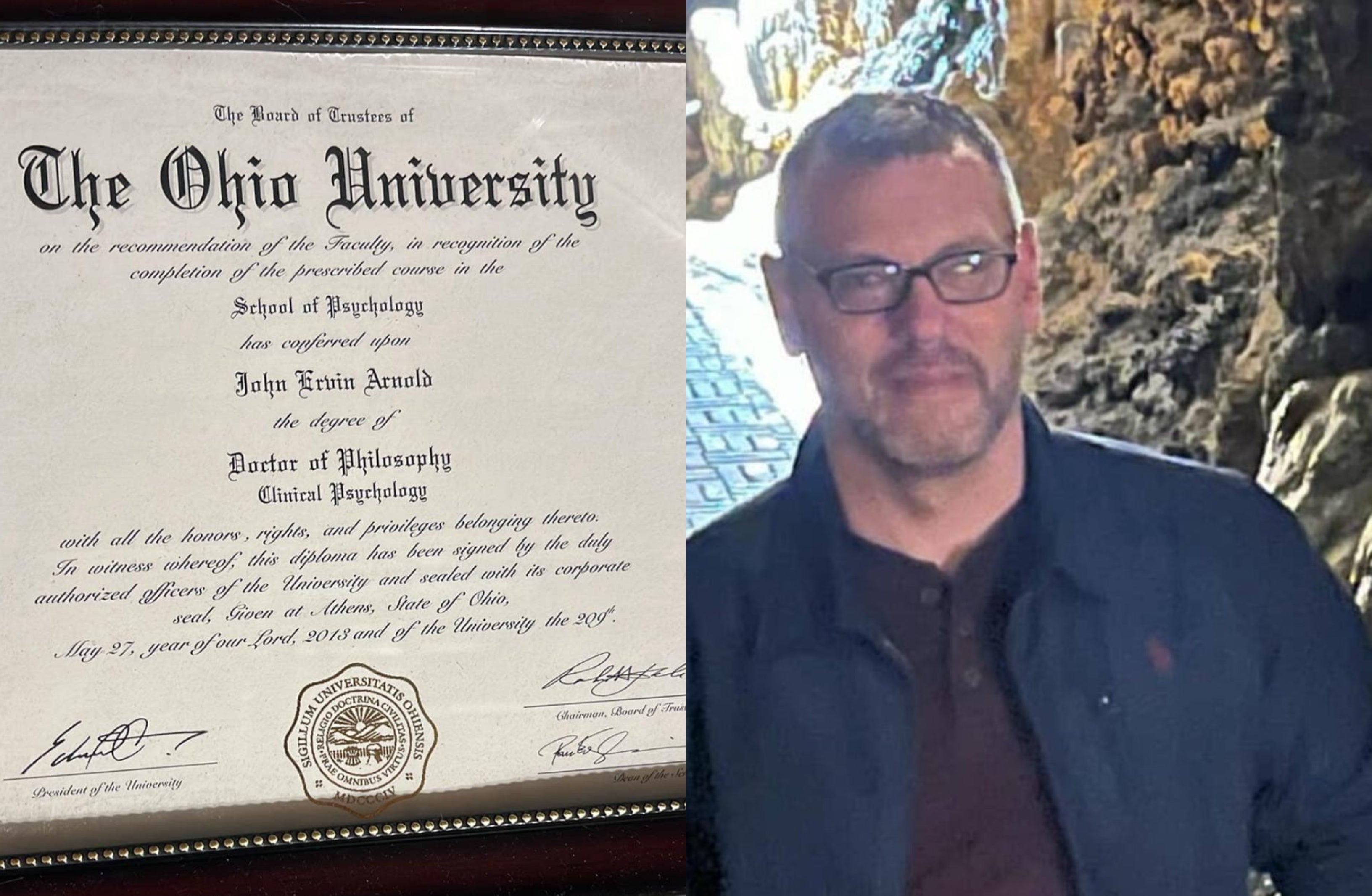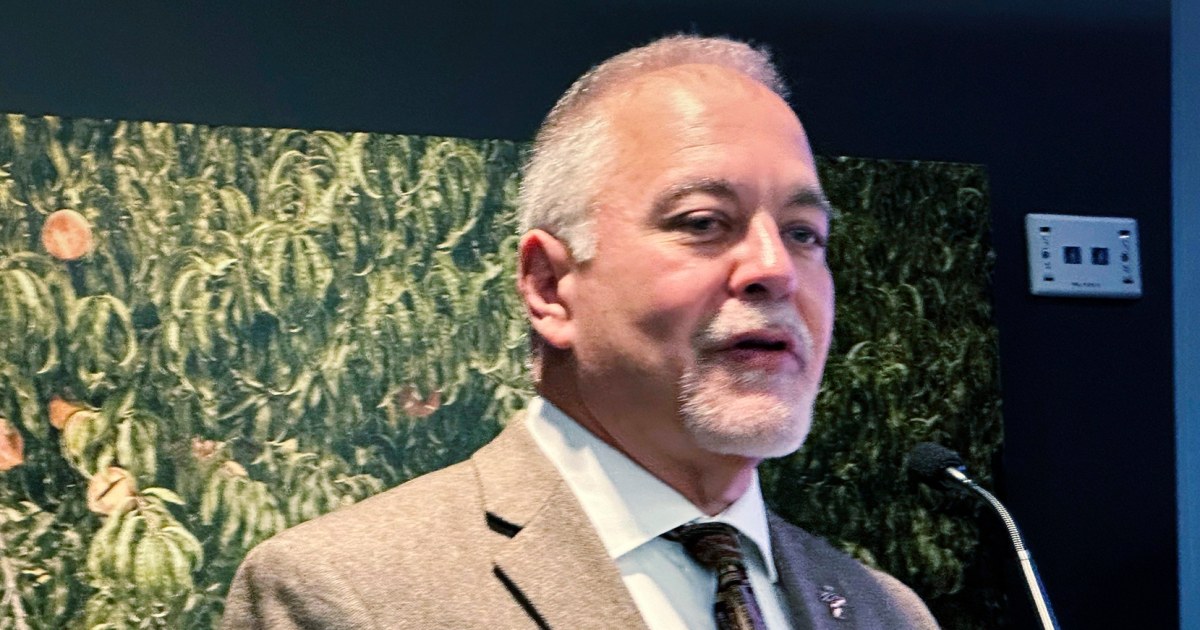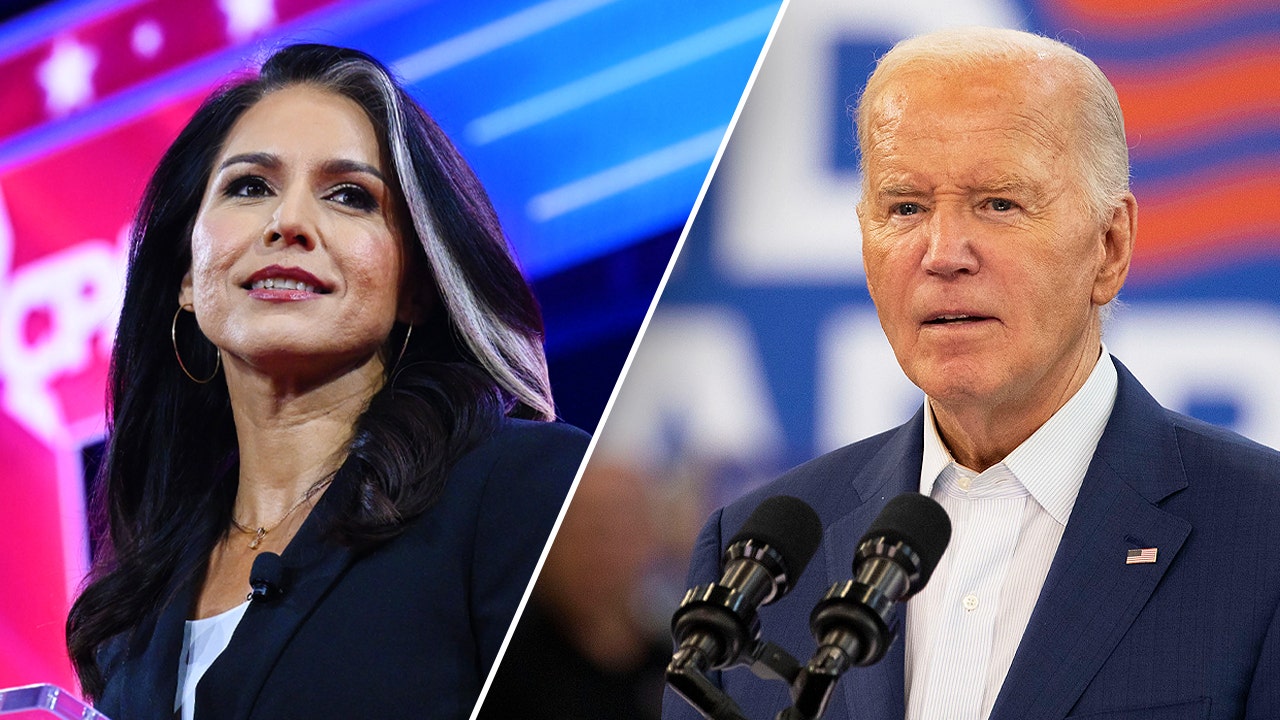Sports
It's like Vegas' Sphere — kinda. 7 things to know about L.A.'s otherworldly new venue

Outside it was sunny and in the high 80s, but inside, a large, spectral-like glacier was rushing toward me.
As it broke apart in the water, it looked sickly, with glowing green streaks running through it. Then it was overhead, and I was spiraling, traversing oceanic crests only to arrive inside an underwater forest.
I was at Cosm in Inglewood. And I was watching a short film, “Seek,” from local artist Nancy Baker Cahill. As images of leaves and algae swirled below, in front and above us, some audience members gasped. Others pointed at mystical details in the fantastical take on nature.
Cosm, which officially opened this month, is an entertainment- and sports-focused venue that places guests in a mini-arena with a screen that surrounds them. It’s L.A.’s latest entry in the still-burgeoning immersive space, one that taps into our long-held desire to be enveloped in panoramic visions, this one a large-scale display that towers in a dome.
While “Seek” is otherworldly, much of Cosm’s programming aims to be grounded in reality. Thus far, it has focused on live simulcasts of sporting events. But don’t think of it as a sports bar. And don’t necessarily consider it a theater, either, although its current programming includes a Cirque cu Soleil favorite. Here are seven things to know about the hard-to-pigeonhole Cosm.
Cosm aims to envelope guests with a wrap-around screen. The venue will focus heavily on sporting events and short, artist-commissioned works.
(Michael Blackshire / Los Angeles Times)
Courtesy of Cosm and Nancy Baker Cahill
1. Think of it as part planetarium, part mini-Sphere
Cosm has roots in science and education. The firm owns Spitz Inc., the planetarium endeavor founded in the 1940s by Armand Spitz, a principal in the field. Yet Cosm Los Angeles definitely has entertainment on its mind. It will no doubt recall Las Vegas’ all-encompassing arena Sphere. Yet Cosm is cozier.
The centerpiece of the venue is its dome, with an 87-foot-diameter wraparound LED screen; Sphere, meanwhile, reaches heights of about 366 feet. But what matters more than sheer numbers is the feel of the environment. If Sphere has centered itself primarily around live music, Cosm is going for an intimate, slightly upscale mood, albeit one in which each of its three seating levels is relatively close to its screen.
That means live entertainment won’t be Cosm’s core programming. Instead, expect live simulcasts of sports, rebroadcasts of theatrical productions and original, artist-driven cinematic installations. If all goes according to plan, perhaps Cosm will host a mix of concert films and live feeds of in-demand, difficult-to-get-into shows. The idea is to complement live performances by giving us views that would be largely impossible to see in the flesh, and to do so with a screen that puts us in the center of the scene.
The resolution, of course, is crisp, with Cosm boasting a 12K LED screen. That presentation, coupled with our close proximity to a screen that wraps around and above us, at times even results in a sense of motion. I watched Cahill’s “Seek” in Cosm’s dome, and the work is one that uses abstract visual effects to present alternately a surreal and welcoming vision of nature. As tornadoes swirled before us or Cahill’s images led us inside a tree, the venue seemed to lift with the visuals, resulting in a theme park-like feel.
“I’m really into big — big everything. I’m a maximalist,” Cahill says when discussing what drew her to Cosm. “Seek” is a commentary about our shifting climate, using tech that encircles us to create a sense of presence.
“Among the most important takeaways and opportunities that I thought about in terms of this canvas was, how could we reconnect to our animal selves?” Cahill says. “How could we really find ourselves embedded in nature by paying attention?”
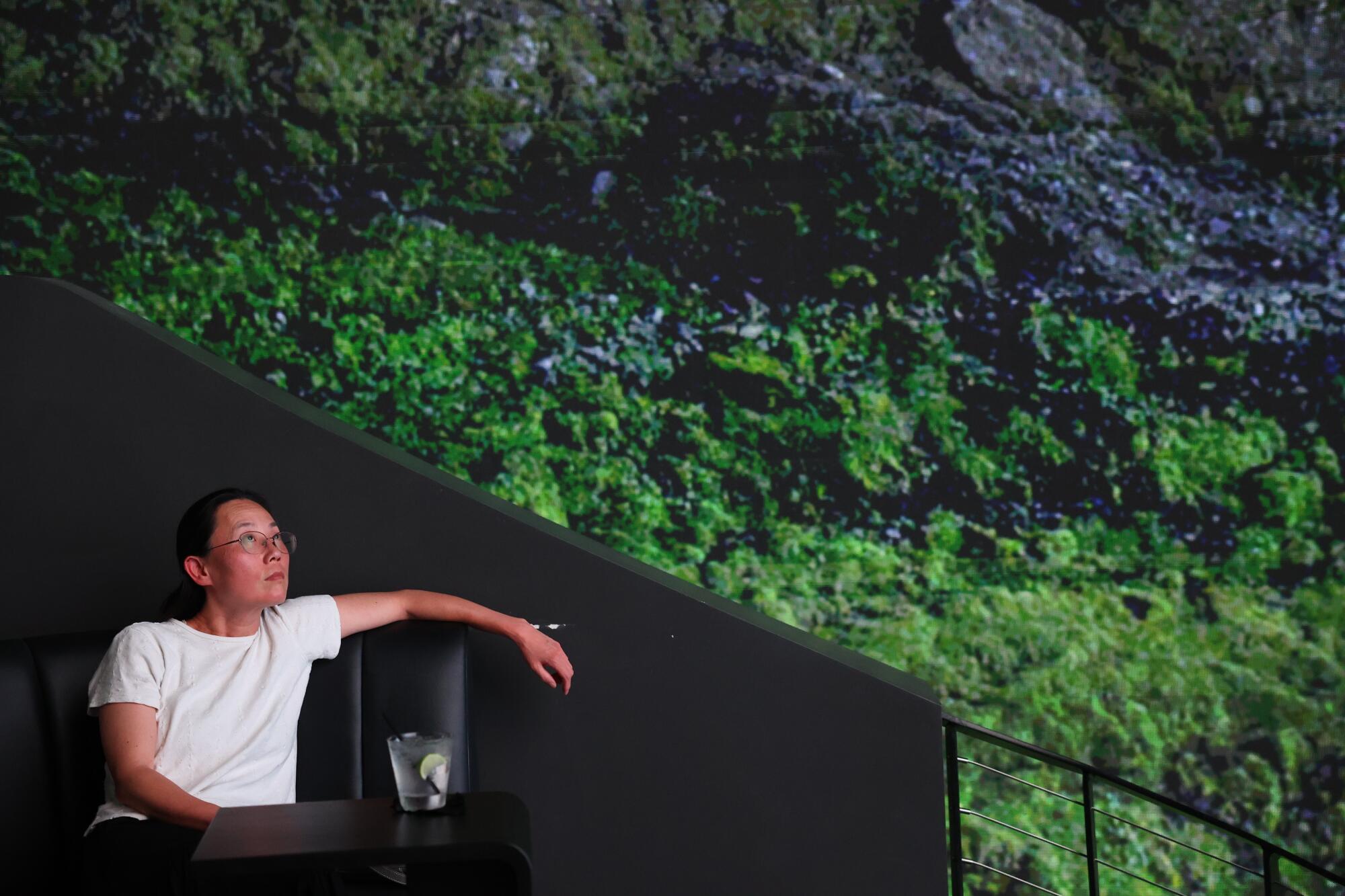
Meera Kim looks on after the “Seek” immersive show experience at Cosm.
(Michael Blackshire / Los Angeles Times)
2. Cosm wants to redefine the sports viewing experience
Situated as it is in Inglewood, nestled near SoFi Stadium and the Intuit Dome, Cosm taps into the sports-centric entertainment of the Hollywood Park area. Much of Cosm’s early programming has centered around UFC bouts, international soccer matches and, soon, the U.S. Open tennis tournament and NCAA football games. So what makes Cosm different from, say, your couch or the local sports bar? The dome, for one, isn’t simply showing a network broadcast.
Cosm events are filmed with the company’s own cameras, providing four to six unique perspectives — either on the field or courtside, or sometimes an unexpected above-ground view, says Devin Poolman, Cosm’s chief product and technology officer. The goal is to ensure what you’re seeing at Cosm is not something that is replicated at home. And if it works, it should create an illusion of being extremely close to the action, as Cosm’s in-house technical directors are switching camera angles on the fly.
Cosm will work with broadcast partners to pipe in live television commentary. Think of it all as simulating a front-row-seat experience. You won’t be tricked into believing you’re actually in the sporting venue, but it should be close. “I liken it to the days of bringing a radio to the ballpark and listening along to the announcers while you’re watching the game,” Poolman says.
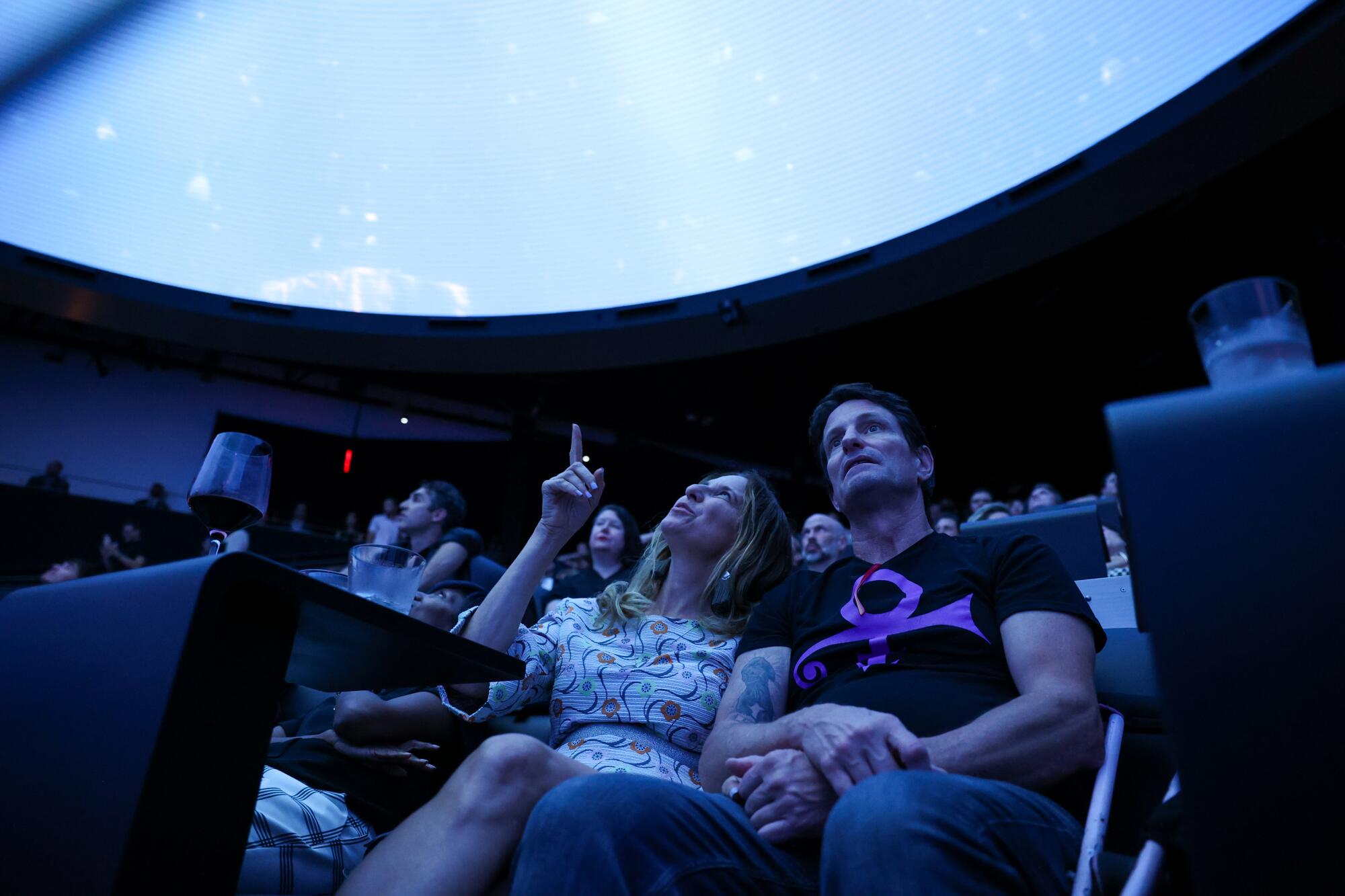
Joanne Popper, left, and James Jones experience “Seek” at Cosm, where the screen encircles guests.
(Michael Blackshire / Los Angeles Times)
3. Cosm insists this is not a theater
“We’re allergic to the term theater,” Poolman says. Cosm’s creators want the spaces to feel social. That’s why they also sell a low-priced general admission ticket, which allows access to the venue’s sports-focused bar and restaurant as well as obstructed, back-of-the-dome viewing. They want guests to know it’s OK to get up, walk around and take in the scenery.
“We want you comfortable in a social setting — going to the bar and grabbing a drink and talking to your friends while enjoying a sense of place,” Poolman says. “That is taking you to a world Nancy Baker Cahill is creating, or a soccer match or UFC fight.”
Seating, for instance, is communal. A second-floor bar rail is available for solo guests but also encourages conversation with those around you. Tables and booths offer seating for two to eight.
Cosm CEO Jeb Terry, a former pro football player, says Cosm isn’t out to show Hollywood films. Instead, the venue will continue to focus on sports and its creator program, which has largely resulted in 30- to 40-minute artist-focused, visual effects-driven works.
In addition to Cahill’s “Seek,” Cosm is home to the animated “Orbital,” from Guy Reid and Planetary Collective, an impressionistic take on the formation of the universe, and “Liquidverse: Microcosm & Macrocosm,” Ricardo Romaneiro‘s psychedelic exploration of miniature chemical reactions. All were created specifically for Cosm using primarily a mix of animation and video game engines.
“We’re not a first-run theater,” says Terry. “We’re leaning into the experiential side.”

An open-air dining area at Cosm also includes a 150-foot wall-to-wall screen.
(Michael Blackshire / Los Angeles Times)
4. Beyond the dome is an open-air restaurant and bar
As someone who spends quite a bit of time at so-called immersive venues and at immersive events, I see a lot of darkened, boxy air-conditioned spaces. After a recent trip to Las Vegas to visit a number of immersive locales, shuffling among indoor spots, I spent a week working in a park, simply wanting to be outdoors. So one of the nice touches with Cosm is its first-floor, relatively open-air restaurant and bar. Dubbed “the Hall,” the area contains an indoor-outdoor bar as well as a menu of sports bar-inspired food (think burgers, wings, popcorn, etc.). Note that the kitchen is available throughout Cosm, including in the dome.
While all of Cosm requires a ticket to enter, the Hall is more budget-friendly than the dome, where tickets can push $70 per person or more. Hall tickets for the U.S. Open simulcast, for instance, cost $6, but NCAA football events run about $22. The centerpiece of the area is its 150-foot wall-to-wall digital display, which can show multiple games — the one showing in the dome, as well as whatever other key matches are happening at that time.
There are two stories, in case one doesn’t want to be looking up at the screens. It’s a nice option if whatever is screening in the dome is a blow-out. More important, though, it provides a window to the outside world, offering a necessary sensory break after being dwarfed by the dome.
5. Spend some time on the rooftop
There are three floors of dome seating, but don’t miss the escalator leading up to Cosm’s rooftop. That gives Cosm another outdoor space, this one free of screens. When all the tech becomes overwhelming, head here to have a bite and a beverage and take in the views of the nearby sporting venues. And if the scene on the first floor is too loud — depending on the game, I imagine Cosm can feel quite active — the rooftop can be a respite. After seeing “Seek,” I spent about 45 minutes up here reacclimating myself to the natural world, wishing I had brought a book.
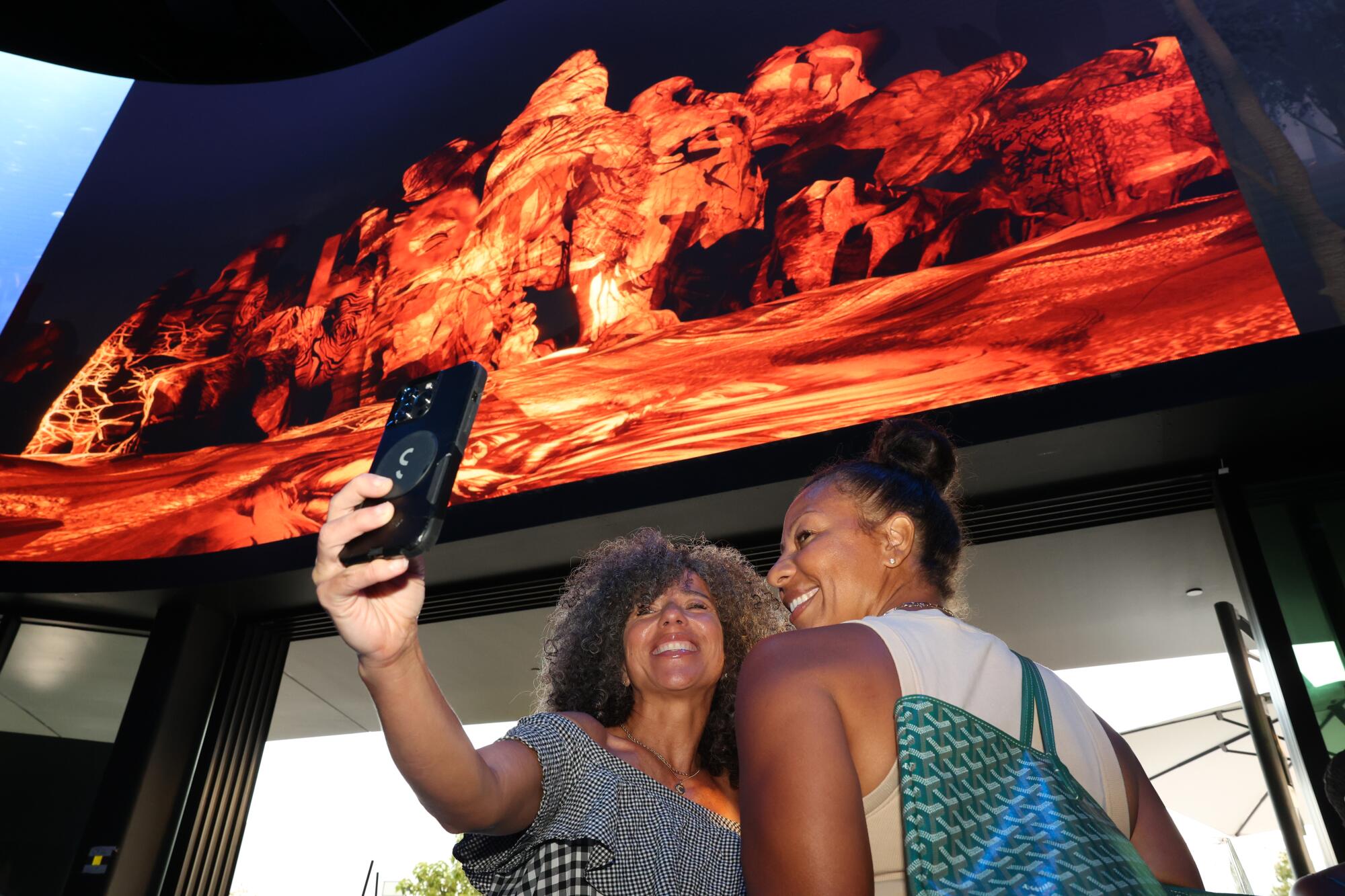
Claudine Cooper, left, and Gaynell Lyons take a selfie in the Hall at Cosm, which is a dining area with a 150-foot wall of screens above its windows.
(Michael Blackshire / Los Angeles Times)
6. Can’t make it to Cirque du Soleil’s “O” in Las Vegas? Head to Cosm
One of the more intriguing programming pieces of Cosm’s early slate is a production of Cirque du Soleil’s “O.” Single tickets start at around $77, with booths for four or five running between $264 and $385, depending on the seating level. Having recently seen “O” in Las Vegas, spending more than $150 for a less-than-desirable seat, I do wonder if the not-live but all-surrounding experience of Cosm would have been a better way to experience the show?
“There’s the opportunity to put you onstage, backstage, in the water and above the stage,” Poolman says. “We give you more than what you’d get as a fan sitting in the audience to keep you closely engaged.”
And no binoculars needed.

Camille Wong, center, talks to friends after a screening of the “Seek” immersive show experience at Cosm.
(Michael Blackshire / Los Angeles Times)

A audience member watches the “Seek” immersive show experience at Cosm.
(Michael Blackshire / Los Angeles Times)
7. Cosm is a statement about the accessibility — and affordability — of live events
The arrival of Cosm on the L.A. scene raises a question: Is live entertainment increasingly becoming unattainable to all but the wealth class?
Cosm, it should be noted, for a dome ticket isn’t cheap, even if it’s a lower cost of entry than a live event. As a tennis fan, I long to get back to New York for the U.S. Open. A single quarterfinal ticket at Cosm runs around $61 for premium viewing. A third-level table for two will set you back $88. An actual ticket to the event in New York, meanwhile, is currently $163 or more for the top deck, not including airfare and hotel.
“Some of the biggest and most sought-after events in the world are unapproachable and inaccessible to the majority of people,” says Cosm CEO Terry.
So while Cosm provides an arguably better presentation than the home viewing one, not to mention offering a sense of community, I can’t help but fear a world where there’s a growing divide between real life and immersive experiences, the latter relegating most of us to a screen-based reality. Sporting and theatrical events aren’t getting any cheaper, so this seems dangerously plausible. It’s a worry, and Cosm seems to bring us one step closer to it, especially with locations planned for Dallas and Atlanta. For now, however, I’ll see you at the U.S. Open, albeit from my seat in Inglewood.

Sports
Don Garber: 25 years of the most powerful man in American soccer

Don Garber is a storyteller.
Over lunch at a Midtown Manhattan rooftop restaurant last month, as he chronicles his journey from Bayside, Queens to the NFL offices on Park Avenue to MLS commissioner, it is clear he knows it is the little details that make a story sing.
He didn’t just work at a gas station in high school, it was Barney’s Gulf, a sponsor of the Tony DePhillips Little League baseball team he played for. He didn’t just deliver newspapers, he learned how to properly fold up the Long Island Press to toss while riding his Stingray bike. He reels off the names of characters he has met along the way, like his wife Betsy’s boss at public relations firm Ruder and Finn, who told her she could find Betsy a better match “than this knucklehead”. “We’ll be married 39 years,” he notes. Or the man who ran the farmstand he worked at during summer break while a student at SUNY Oneonta.
He drops a few surprises, too. Garber’s resume may start at a vocational school near LaGuardia Airport, but his first year and a half after college was spent sleeping in a Ford van, working at bars and installing irrigation lines to pay his way across the U.S. and Mexico with some buddies.
“Old guys have great stories,” Garber says, with a smile.
Next month will mark 25 years for Garber as MLS commissioner, and his ability to tell a story — and to sell it — make him one of the most impactful figures in American soccer history.
Garber, 66, joined a fledgling MLS in 1999 from the NFL. His background in public relations, marketing and sales was essential to keeping MLS afloat. Garber had to sell soccer — to the public, to sponsors and, eventually, to investors. He navigated MLS through near bankruptcy and dissolution in 2001, ushered it into solvency with the creation of Soccer United Marketing, the commercial arm of the league that leveraged the growing popularity of the sport to keep the league afloat, and then led its expansion and foundational growth over the ensuing two decades.
MLS has a permanence now that never previously existed in the sport’s history in the U.S. and Canada. Whereas past pro soccer leagues came and went, an alphabet soup of attempts to make soccer “the sport of the future,” MLS now has 30 teams, 22 soccer-specific stadiums in markets across the U.S, with another two under construction and two more no longer in use, and club valuations that continue to rise at a head-spinning rate.
“I can confidently say we wouldn’t be where we are today, in fact, the league may not still be in business, without Don’s leadership,” said FC Dallas owner Clark Hunt, who also owns the NFL’s Kansas City Chiefs.
Garber’s legacy is that foundation but, two and a half decades later, the job is hardly done.
Whereas he once sat across the table in a conference room with three owners, on Wednesday Garber will sit on a dais in a hotel ballroom for a board of governors meeting with nearly 100 people representing all 30 ownership groups. His job is to build consensus in that group at a time in which soccer has continued to grow in popularity in the U.S. and Canada, but where MLS is still fighting for its place in the sports landscape.
MLS is confronting a moment in time as consequential as when Garber first sold the idea that kept the league alive in 2001. The World Cup is coming in two years, and everyone wants a bite at the market Garber has called the sport’s ATM. The greatest player of all time, Lionel Messi, plays for Inter Miami and has brought more eyeballs to MLS than ever before. The league announced this week it has set midseason records in attendance and in sponsorship sales. But how they fully take advantage of the moment remains very much up for debate, even within their own board.
Once again, Garber — who is in the final stages of a contract extension to remain as commissioner — is tasked with seeing the right path forward; of understanding the risks, but also recognizing the opportunity.
Don Garber talks to The Athletic’s Paul Tenorio (MLS)
Garber shakes his head at the question: How much is Queens still a part of who he is?
“You cannot take the Queens out of anybody who truly was born and bred there,” he says. “It is a part of your DNA.”
Garber grew up in Bayside in the 1960s and 70s, a middle-class community built around immigrant families. Your reputation was built playing basketball and stickball, and you were judged not just by how good you were on the fields, but also how good of a hang. Garber didn’t struggle in either area.
“He was the glue, he was the guy who created a lot of the fun,” said New York Islanders owner Jon Ledecky, who went to grade school with Garber in Queens. “He was a ringleader, if you will, but not in a mischievous way, a very positive way of organizing everything, from being on the sandlot to hoops and just hanging out and having fun. As little kids, there are guys you look up to. Don was one of those guys.”
For Garber, being from Queens is about deep loyalty, but also “real ambition to want to be in an environment that still has the connectivity and the loyalty and the friendships from where you came from, but sort of aspires to be across the river.” It was a hunger that built up in his group of friends, many of whom went on to great success. The group includes a billionaire, a sports team owner and a commissioner, as well as several others who have risen to the top of their field.
Ledecky, a Harvard grad, said the cohort may be the smartest group of people he has been with in a concentrated fashion. There is a group of them, about 15 or 20, that still get together at a bar back in the old neighborhood around the holidays.
“We were all part of a group of guys who had drive and ambition burned into us by immigrant parents,” Ledecky said.
Garber left home to attend SUNY Oneonta, and then, after living in a van for about 18 months, got a letter from his mom trying to lure him back home with a job advertisement clipped from the newspaper. It was for a PR job at the Bulova School of Watchmaking, a tuition-free program for veterans. Garber moved back to the old neighborhood and got to work, coaching a wheelchair basketball team at the school.
Eventually, his aunt recommended he get an internship at Rudder and Finn, a PR firm, which was starting a sports department. There, Garber worked on accounts for 7Up, Miller Lite and Kinney’s Foot Locker. He eventually parlayed his PR work into a job with NFL Properties.
In an office filled with MBAs from Ivy League schools, the kid from Queens felt he constantly had to prove himself. Garber put his head down and worked in what was an unforgiving environment. It was there he learned how to sell and to “chart through choppy waters.” It was also there that Garber learned to trust his vision for what others might not be able to see.
When NFL Properties decided to keep just one sales exec to run the team, Garber remembers a colleague, Rick Dudley, coming into his office.
“Hey Don, you’re out,” he said.
As a VP of business development, Garber oversaw areas that came at a cost for the NFL. The other employee who worked in media sales was bringing in money. Garber, though, could not fathom the idea he was out.
“I said to Rick, ‘Why don’t you let me go home and I’m going to create a department for all these things that we’ve been working on,’” Garber said. “We can do an event at the Super Bowl. I think we can do TV shows. I think we should change the halftime show. There’s a whole events business… I went home and I came up with a plan.”
Garber returned and took the plan to the sales team. He was asked a simple question: Could they find sponsors to fund these ideas? If they did, it would get moved up the chain to NFL commissioner Paul Tagliabue. Over the next few months, they sold the plan.
“We went to Coke, went to Amex, went to Frito Lay on the halftime show,” Garber said.
The NFL Experience launched in 1992, drawing 100,000 fans. Three years later, the success of NFL Experience led Tagliabue to tab Garber, then 37, to run the NFL international business. Garber built out a successful group there, too.
His success selling American football to the world prompted New England Patriots owner Robert Kraft to approach Garber to see if he would be willing to take over as MLS commissioner and try selling soccer in the U.S. Newspapers around the country panned the decision to hire an NFL executive with no soccer knowledge to run the league. For Garber, it felt like a similar pitch to the one he made around the NFL Experience. He understood the potential.
“There was so much opportunity,” Garber said. “They weren’t really doing everything they needed to do. And you have to have the kind of mind to see that, and that was my skill set. I saw something in soccer that I think a bunch of owners saw, but I don’t think a lot of other people saw. You have to look and see what could be as opposed to what’s right in front of you.”
It wouldn’t take long until that skill set was tested.
Garber was just over one year into his tenure as MLS commissioner but, as he sat around the dining room table at Phil Anschutz’s ranch in Colorado with a handful of owners in December 2000, the existence of the league was in jeopardy.
Multiple teams were struggling at the gates. The league was losing money and bankruptcy attorneys were on retainer. MLS’s handful of owners gathered to discuss whether there was a path forward. Garber and then-deputy commissioner Mark Abbott presented two plans. The first was to continue doing business as usual.
“We’re going to lose more money and I can’t sit here today and tell you that, three years from now, we would recommend going forward,” Garber recalled saying. “We don’t think it’s a viable plan for a professional sports league.”
Plan B was more involved: “Quadruple down, take some big risks,” Garber said. Fold two teams, build stadiums and invest tens of millions into a new business focused on growing the commercial market around soccer. Garber said the idea was to prove there was, indeed, an appetite for the sport — and through that, a market for MLS.
“We needed to create a commercial engine that would raise the overall commercial value of soccer in America, because that hadn’t existed,” Garber said. “You couldn’t talk to a sponsor about investing in soccer. They didn’t know what soccer was. They couldn’t see any value in soccer.”
It wasn’t an easy sell to the owners.
“When we presented that plan, a number of owners said ‘I’m out’,” Garber said. “I don’t like Plan A, which is gonna lose more money and the league is going to fold, and I don’t want to put in any more money (for Plan B). And we needed to sit in that famous dining room and not leave until we had at least come up with an iteration of the plan which kept the original owners together. And that was backroom negotiations and some really fun discussions that got heated at times, that had everybody looking each other in the eye and saying: ‘Are you in? If you’re in, I’m in.’”
Three owners, Anschutz, Kraft and Lamar Hunt, committed to stay in. Hunt and Anschutz took on ownership of multiple teams. Teams in Miami and Tampa Bay were contracted after the 2001 season. Most crucially, the owners launched Soccer United Marketing, purchasing the American television rights to the 2002 and 2006 men’s World Cups and 2003 Women’s World Cup — which had no buyer at the time — for around $40 million, covering all production costs and selling advertising for ESPN.
“Don’s a great salesman and he was able to convince us that there was an opportunity to create an economic model that went beyond the league, that Major League Soccer could participate in, that would help sustain the sport,” Clark Hunt said. “The creation of SUM was pivotal at that time. I think today, you look back at it and know that was one of those seminal moments in the history of the league.”
The decision around that table set the stage for the next phase of MLS: stabilize the league and then, just a few years after contracting teams, expand again. That Garber carved the path there was no surprise to those who had watched him ascend to the job.
“I think the reason they hired Don is they saw what I saw when he was a kid,” Ledecky said. “They saw that gift of being able to bring people together and to say, ‘Look, we’re gonna go from A to B, and we’re gonna be OK doing it.’ That is one of his superpowers.”
The images have become ubiquitous over the past decade in MLS. Garber on a stage wearing the scarf of a new expansion city, or in a hard hat holding a shovel in front of a stadium site.
If Garber’s legacy in his first decade and a half in MLS was keeping the league afloat and helping it find some degree of stability, the past 10 years have been about the league’s growth, both across the continent and vertically in the stadiums and facilities it has built.
The turning point came in 2009, when Garber stood on the field in Seattle in awe of the 32,000-plus in attendance. The league started to expand again in 2005, welcoming franchises into Los Angeles — one of the league’s biggest mistakes, Chivas USA, which it dissolved in 2014 — as well as Salt Lake, then relocating a team to Houston in 2006 and welcoming Toronto in 2007.
David Beckham’s arrival with the LA Galaxy in 2007 also gave the league a level of credibility it had long sought. But the images of packed stadiums in Seattle became the selling point on which the trajectory of the league flipped.

Don Garber and David Beckham, two hugely influential figures in MLS history (MLS)
“That was the shot heard around the world,” Garber said. “Like, ‘Hey, there’s something here that everybody’s missing.’”
Soccer was suddenly sellable. The Seattle Sounders were the 15th team in MLS. Ten years later, the league had grown to 24 teams, with expansion franchises in Philadelphia, Portland, Vancouver, Montreal, New York, Orlando, Atlanta, Minnesota, Los Angeles and Cincinnati. Five more teams would join from 2019-23.
“It was very hard to get people interested in the league with no fee to join (at the beginning),” Clark Hunt said. “And Don kept working at it and started nurturing some relationships that he had and building new relationships with people who were interested in the sport, and slowly but surely we were able to start attracting investors and also gaining traction with city leaders in various parts of the country who were interested in potentially bringing a Major League Soccer team to their city and helping build a stadium where that new team could play.”
As the league grew, Garber pushed owners to invest in facilities. Billions of dollars were spent on training facilities and stadiums around the country. The images of those soccer-specific stadiums, and the atmospheres in them, have become arguably the league’s greatest asset.
“One of the biggest accomplishments that our owners have achieved, which takes blood, sweat, enormous planning, intense lobbying municipalities and real courage, is the fact we built 26 soccer stadiums,” Garber said. “When I walk into this office every day and I walk past a long wall of (pictures of) stadiums, I find it’s still incredibly inspiring. We did that one brick at a time.”

Don Garber surveys St Louis’ CityPark stadium in 2022, shortly before it officially opened (MLS)
 As the league’s infrastructure and real-estate portfolios have grown, so too have valuations around the clubs. Forbes ranked LAFC as MLS’s most valuable club at $1.2 billion this year, just ahead of Messi and Miami’s $1.03 billion valuation. Forbes estimates the average value of an MLS club is around $658 million.
As the league’s infrastructure and real-estate portfolios have grown, so too have valuations around the clubs. Forbes ranked LAFC as MLS’s most valuable club at $1.2 billion this year, just ahead of Messi and Miami’s $1.03 billion valuation. Forbes estimates the average value of an MLS club is around $658 million.
It is a remarkable number, considering Forbes’ estimates that MLS teams average around $66 million in revenue and the league recently locked into a 10-year media rights deal with Apple for $2.5 billion, a deal in which the league covers all of the production costs. The Apple deal is considered one of the league’s biggest bets, moving the entirety of its product — local, national and international media rights — behind a paywall on a streaming service, but also in partnership with one of the world’s most powerful companies.
The market has remained bullish on MLS, especially with the World Cup around the corner. San Diego recently paid a $500 million expansion fee and will begin play next year, while Indianapolis is now lobbying for its own expansion team.
On Monday, the league announced increases in league and club sponsorship revenue by about 10 percent year over year, as well as increases in jersey sales and social engagement.
“It was an average (team) value of $10 million 20 years ago,” LAFC owner Bennett Rosenthal said. “You’ve got close to $20 billion of enterprise value (now). That’s a legacy of itself, that you’ve created something of such economic value.”
Garber, meanwhile, has grown into the most powerful figure in American soccer. In addition to running MLS, he has sat on the board of U.S. Soccer for more than two decades, a seat that drew the ire of fans this year when MLS attempted to pull its team out of the U.S. Open Cup. In the end, only eight MLS teams participated in the 110-year-old tournament. Garber has been accused of wielding his influence too much to favor MLS over other professional leagues and of putting the good of the league’s business over that of the sport itself. The relationship between MLS and U.S. Soccer was also long considered too cozy, with a shared media-rights deal brokered by SUM, though the U.S. Soccer and SUM relationship ended in 2021 after nearly 20 years of partnership.
Garber, however, has long pushed back at the idea he has too much power, instead saying it falls on the pro leagues to have that sort of influence on growing the game.
“There is no doubt we take it very serious that we have an obligation to build this sport,” Garber told The Athletic earlier this year. “And that’s something we think about every day. I’ve been on the board of U.S. Soccer for decades, I’ve never missed an (annual general meeting), and I take that responsibility passionately and seriously. But we all have to think about our evolving world of soccer as something that can’t just be based on what was — but has to evolve in a world of what it is and what it needs to be. And that requires rethinking things.”
That idea applies to more than just the U.S. Open Cup or U.S. Soccer, however. With the appetite for the sport continuing to increase, MLS must now determine the best way forward. Garber again will have a hugely influential impact on that direction.
Messi’s arrival in Miami last summer turned an even bigger spotlight on MLS and highlighted areas where the league still has massive opportunity. While the business metrics are positive and the valuations have soared, the sporting side of the league still lags behind much of its global competition.
For so long, MLS has been about steady, targeted growth. But whether that approach is still the right one is very much up for debate in a boardroom that has had an injection of new personalities and opinions during the league’s boom era of expansion. Some owners want the league to push forward more aggressively. Others favor the continuation of the more conservative approach.
“In the past, we had 100 percent unanimity on every vote. We don’t anymore. Now, there’s lots more debate,” Garber said. “And that’s OK. It requires us to do a little more work on ensuring everybody understands the decisions they’re making and what impact that’s going to have on the enterprise. But that’s the reality of a maturing sports league. It happens in every other league. You’re going to have big markets and small markets. You’re going to have legacy owners and new owners… I need to be focused and the league office needs to be focused on enterprise success on behalf of all. That’s a very, very, very different job than it was 10 years ago.”
Garber’s ability to navigate the boardroom has become an increasingly important — and difficult — job. Many of these owners are billionaires who have built ultra-successful businesses. All of them have strong opinions.
“Those are not 30 shrinking violets — and, by the way, it’s not necessarily 30 (owners), it’s 60 or 80 personalities,” Sounders owner Adrian Hanauer said, “Don has a superpower of relating to people in the way they need to be related to. He has a breadth of knowledge but also just a humanity about him that allows him to have empathy, to understand what people are going through and what they need.”
Nashville owner John Ingram said: “He can be a tough New Yorker when he needs to be, but he’s also just a lovely person too.”
Garber said he got one last piece of advice from Tagliabue when he left the NFL: “Keep the owners who hate you away from the ones who are undecided.” As the number and variety of opinions have increased, that task is probably put to the test more often. While his ability to tell a story and sell a sport may have been his most important skill when he first took over as commissioner, it is the skill set of the kid from Bayside, that ability to bring people together, that became his most important attribute over the past decade.
“As a commissioner, it’s not just having the ideas; it’s being able to get people to rally around them and join hands,” LAFC co-owner Larry Berg said. “And he’s very good at that.”

Don Garber meets Nelson Mandela in 2010, with President Clinton also present (MLS)
As Garber now moves into the back half of his third decade in charge of MLS, however, he has to determine the best path for owners to rally around. The league’s success with a deliberate approach over the past 25 years undoubtedly still informs the strategy today.
Garber clearly understands that, as the global market evolves, MLS’s ability to evolve with it is critical to its continued growth. What was accomplished in his first 25 years as commissioner has set the league up to be ready for what comes next, he said.
“Where it was a primary focus on building long-term stability and viability in the past and having to make some really creative or tough decisions to achieve that, today we’ve achieved that long-term viability and stability,” Garber said. “And now we need to turn a lot of our energy into thinking about: How do we take everything that we built and turn it into something that will truly achieve our goal of being one of the top soccer leagues in the world?
“What does that mean to our player signing strategy? What does it mean to our focus on competitive balance? What does it mean to our competitive schedule and competition format? What does it mean to how we centralize a lot of our commercial rights? We need to go through a process to determine: Are the things that we’ve done that have driven us to where we are today the same things that will drive us to where we need to go tomorrow? And I’m not convinced they are.
“I think we do need to take a big step back so we can take five steps forward.”
The many questions Garber posed remain unanswered as he and MLS determine what those five steps forward look like. At its core, Garber believes the task is still the same one he signed up for 25 years ago. Selling a dream about what top-division soccer can look like in the U.S. and convincing people to care.
“We will be one of the dominant leagues in the world,” he said. “The question isn’t if, it’s when. We will be. Nothing but time will stop that. And we just have to be smart enough to not be lazy and think we can get there too quickly. We have to earn it.”
It’s a story Garber’s not quite done telling yet.
(Top photos: Getty Images and Austin FC; design Eamonn Dalton)
Sports
Angel Reese joins 3×3 basketball league set to pay out highest average salaries in women's sports
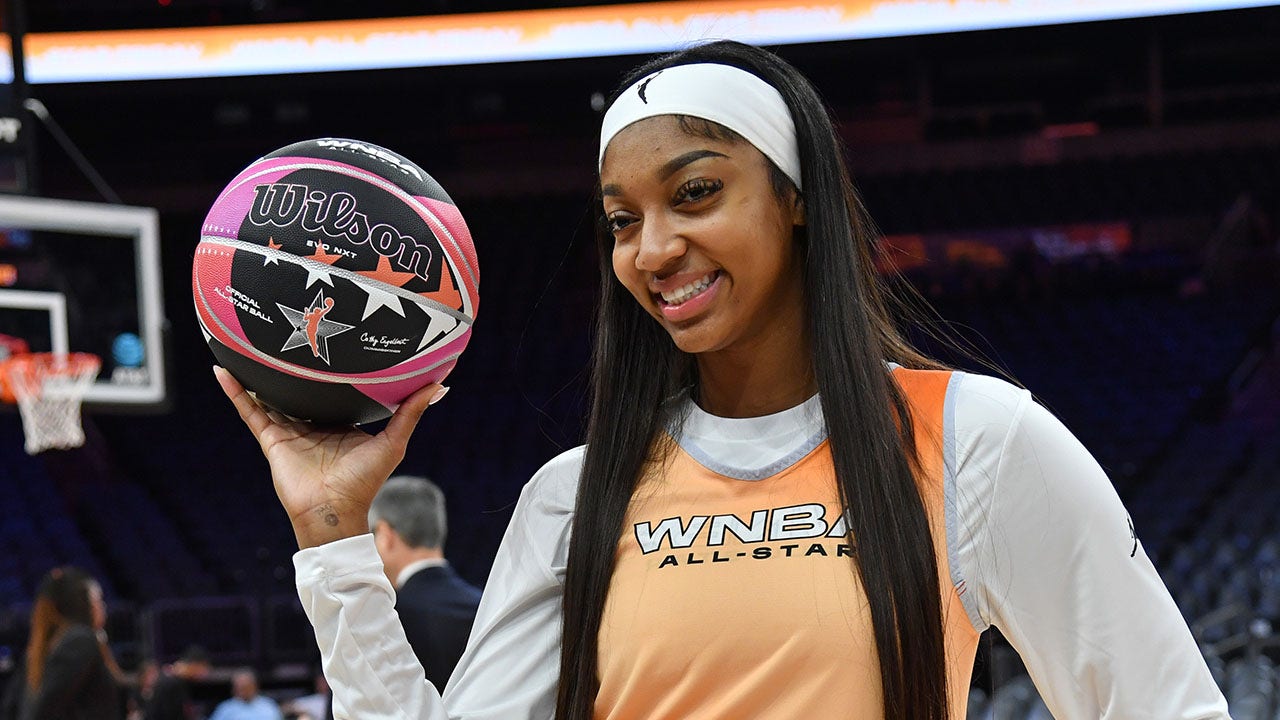
WNBA star rookie Angel Reese already knows what she will be doing during her first offseason.
Reese became the first rookie in the league to join Unrivaled, the player-owned professional women’s basketball league co-founded by the Minnesota Lynx’s Napheesa Collier and New York Liberty’s Breanna Stewart.
The 3-on-3 league, which is based out of Miami, is set to begin in January 2025.
Angel Reese, #5 of Team WNBA, looks on during practice on July 19, 2024 at Footprint Center in Phoenix. (Juan Ocampo/NBAE via Getty Images)
Reese made the announcement on social media along with Unrivaled.
“305 BARBIEEEEE,” she captioned her post with a crown emoji, with the “305” being Miami’s zip code. “SEE YALL IN THE YAMSSSSSSS.”
Reese marks the 10th player to join Unrivaled, which also includes Stewart, Collier, Chelsea Gray, Arike Ogunbowale, Jewell Loyd, Kelsey Plum, Rhyne Howard, Kahleah Copper and Jackie Young.
ANGEL REESE JOKES SHE CAN GET ALONG WITH CAITLIN CLARK FOR ‘ONE DAY’ AS THEY TEM UP ON ALL-STAR TEAM
It is not uncommon for WNBA players to find supplemental pay in the offseason by playing elsewhere, usually finding a roster spot overseas.
However, Unrivaled players will have equity and a vested interest in the league’s success. It will feature 30 of the top players in the game, playing on six 3-on-3 teams, and the league boasts “historic contract opportunities offering the highest average salary in women’s professional sports league history.”
The league has its first and founding partner on board, Ally Financial, as well as other top athletes in various sports, including USWNT legends Alex Morgan and Megan Rapinoe, NBA icons Carmelo Anthony and Steve Nash, and many top names in business, including Gary Vaynerchuck.
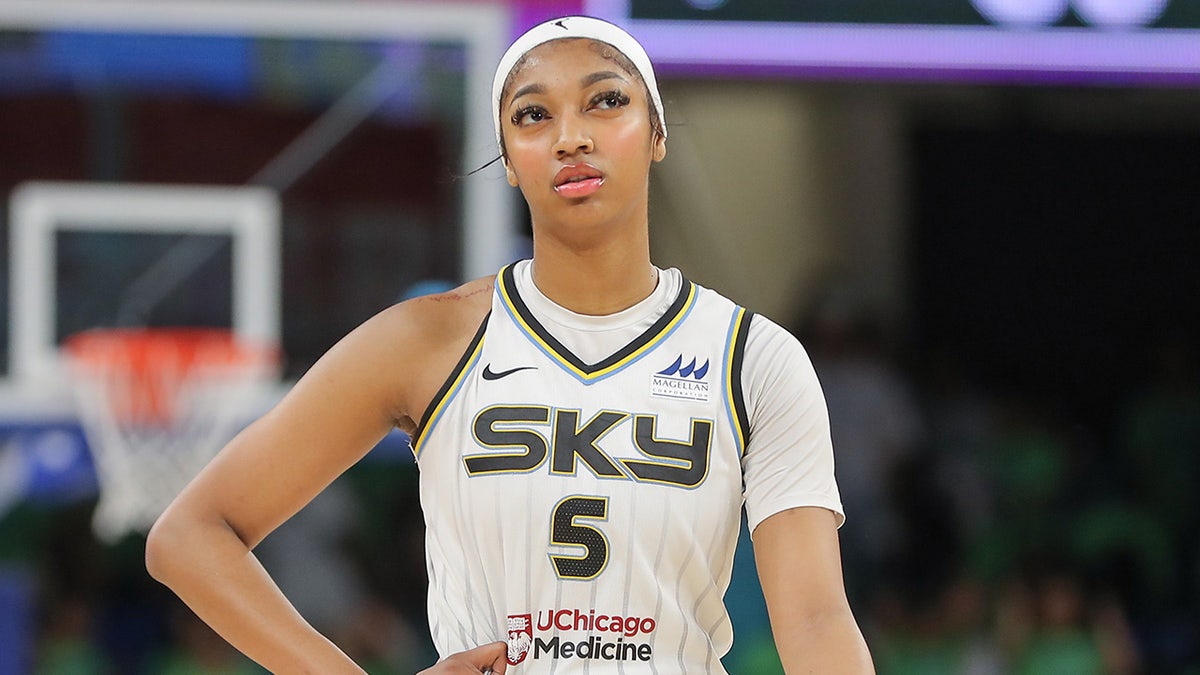
Angel Reese, #5 of the Chicago Sky, looks on during the second half against the Atlanta Dream on July 10, 2024 at Wintrust Arena in Chicago. (Melissa Tamez/Icon Sportswire via Getty Images)
“For years, women have relied heavily on off-court sponsorships for a majority of their income,” Stewart said, via the New York Post. “With Unrivaled, we’re revolutionizing the game by prioritizing investments in our stars and ensuring their on-court performance is reflected in their pay.”
For any league to have success, it needs to be popular, and Reese has already helped the WNBA expand its viewership more than what it has accomplished with the other women in this new league in prior seasons.
Along with Caitlin Clark and other rookies with star status in college, Reese’s performances and comments post-game have led to talk show segments and much more debate on social media, leading to more eyes on the games.
The WNBA All-Star Game also featured two rookies for the first time since 2014, as Clark and Reese showcased their skills as teammates instead of rivals for once. There were 3.44 million people watching the game, as Team WNBA defeated Team USA, 117-109.
Reese understands just how popular she is already in the pros, but like the veteran stars around her, she is using her skills and platform to help grow another league – one where she will have equity alongside her fellow hoopers.
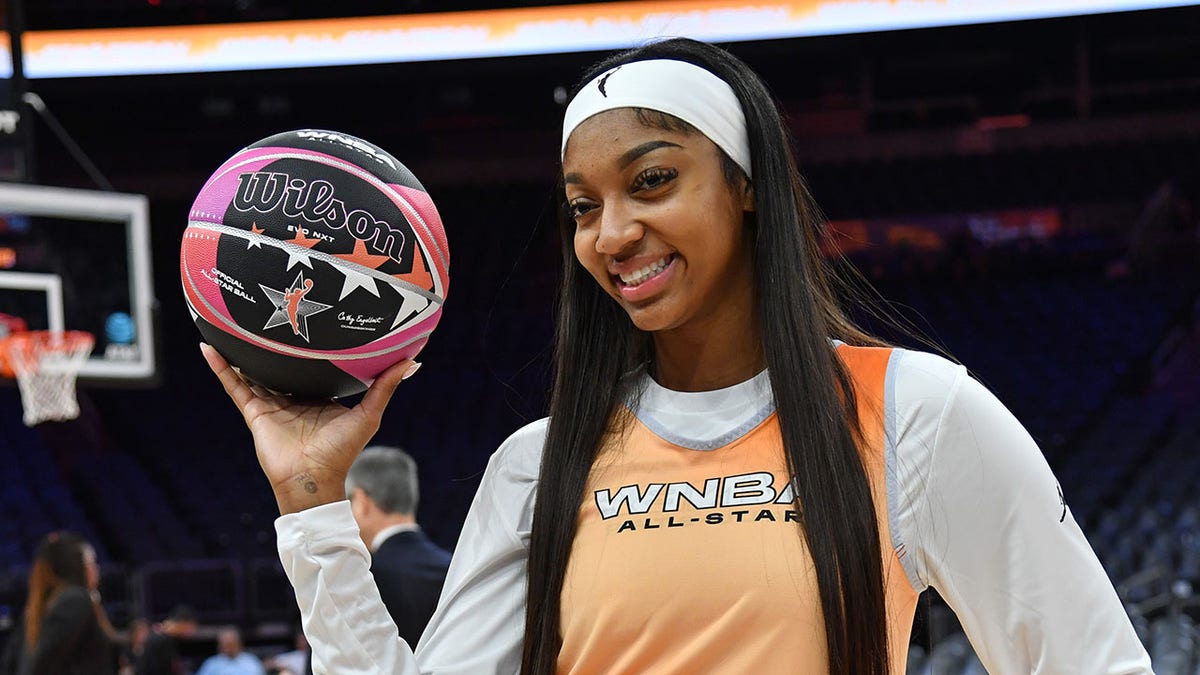
Angel Reese, #5 of Team WNBA, poses for a photo during practice on July 19, 2024 at Footprint Center in Phoenix. (Juan Ocampo/NBAE via Getty Images)
Reese signed a four-year, $324,383 contract with the Chicago Sky when she was drafted seventh overall. She is making $73,439 for her rookie season.
Follow Fox News Digital’s sports coverage on X, and subscribe to the Fox News Sports Huddle newsletter.
Sports
Two Canada Olympic staff members sent home after spying attempt on New Zealand soccer practice

NICE, France — The Olympic women’s soccer tournament is starting with some unexpected drama: a complaint from New Zealand’s Olympic Committee about an attempt at spying during a training session just before the Paris Games.
A drone was flown over a Ferns training session in Saint-Étienne, France, on Monday, New Zealand’s Olympic Committee (NZOC) said in a statement. Ferns staffers reported the drone to police, who detained the operator, a staff member for the Canadian team.
On Wednesday, the Canadian Olympic Committee said that a separate drone incident at New Zealand training on July 19 had come to light. As a result, Canada head coach Bev Priestman said she would remove herself from overseeing Thursday’s game against New Zealand. The COC added that Joseph Lombardi, an “unaccredited analyst,” and Jasmine Mander, a coach who oversees Lombardi, had been removed from the team and sent home. The committee said Canada Soccer staff would also undergo “mandatory ethics training.”
The COC’s initial statement Wednesday morning confirmed that Lombardi used a drone “to record the New Zealand women’s football team during practice.” The COC apologized to New Zealand’s players, federation and the International Olympic Committee, saying it was “shocked and disappointed.”
FIFA later confirmed on Wednesday its disciplinary committee had opened proceedings against Canada Soccer, Priestman, Mander and Lombardi. The incident represented a potential breach of FIFA and Olympic football’s fair play regulations.
Priestman will not be on the sidelines for Canada’s game against New Zealand (Logan Riely/Getty Images)
“On behalf of our entire team, I first and foremost want to apologize to the players and staff at New Zealand Football and to the players on Team Canada,” Priestman later said. “This does not represent the values that our team stands for.
“I am ultimately responsible for conduct in our program. Accordingly, to emphasize our team’s commitment to integrity, I have decided to voluntarily withdraw from coaching the match on Thursday. In the spirit of accountability, I do this with the interests of both teams in mind and to ensure everyone feels that the sportsmanship of this game is upheld.”
A FIFA statement read: “The FIFA Disciplinary Committee has opened proceedings against Canada Soccer, Ms Beverly Priestman, Mr Joseph Lombardi and Ms Jasmine Mander due to the potential breach of article 13 of the FIFA Disciplinary Code and article 6.1 of the Regulations Olympic Football Tournaments Games of the XXXIII Olympiad Paris 2024 — final competition, following incidents involving a non-accredited member of the Canadian delegation at the Women’s Olympic Football Tournament, who is believed to have used a drone to record the New Zealand women’s football team.
“The matter will be submitted for the consideration of the Disciplinary Committee in the next days.”
New Zealand Football CEO Andrew Pragnell issued a statement Thursday morning in New Zealand calling for “urgent action” to be taken to “address this integrity breach.”
“To hear now that the Canadian team had filmed secret footage of our team training at least twice is incredibly concerning and if not treated urgently could have wider implications for the integrity of the tournament,” Pragnell’s statement said.
“We note that there have been some admissions by the Canadian National Olympic Committee, and they have taken their own sanctions against the Canadian team, however, considering the seriousness of the situation, and the potential implications to the sporting integrity of the entire tournament, we have referred the matter to the FIFA Disciplinary Committee seeking urgent action,” the statement continued.
Drones have been a story across the Paris Games, with French prime minister Gabriel Attal saying Tuesday that an average of six drones per day have been intercepted at Olympic sites, mostly from tourists trying to capture footage of the spectacle.
The women’s soccer tournament begins play Thursday. Canada and New Zealand open action in Group A at 5 p.m. local/11 a.m. ET in Saint-Étienne, in a group with France and Colombia. Canada is currently ranked eighth in the world, according to FIFA, while New Zealand is ranked 28th.
Required reading
(Photo: Jean-Pierre Clatot / AFP via Getty)
-

 World1 week ago
World1 week agoOne dead after car crashes into restaurant in Paris
-

 News6 days ago
News6 days agoVideo: Young Republicans on Why Their Party Isn’t Reaching Gen Z (And What They Can Do About It)
-

 News1 week ago
News1 week agoIn Milwaukee, Black Voters Struggle to Find a Home With Either Party
-

 Politics7 days ago
Politics7 days agoFox News Politics: The Call is Coming from Inside the House
-

 Midwest7 days ago
Midwest7 days agoMichigan rep posts video response to Stephen Colbert's joke about his RNC speech: 'Touché'
-

 News7 days ago
News7 days agoVideo: J.D. Vance Accepts Vice-Presidential Nomination
-

 World7 days ago
World7 days agoTrump to take RNC stage for first speech since assassination attempt
-
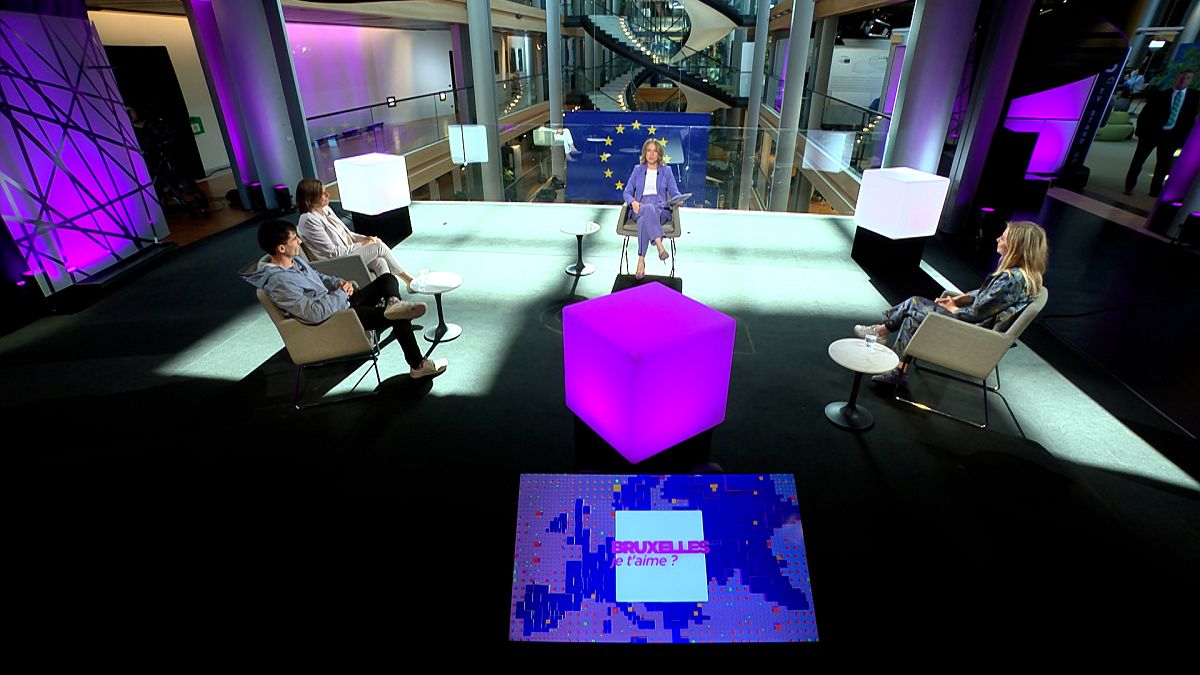
 World5 days ago
World5 days agoFreshers' week in Strasbourg for new EU lawmakers



